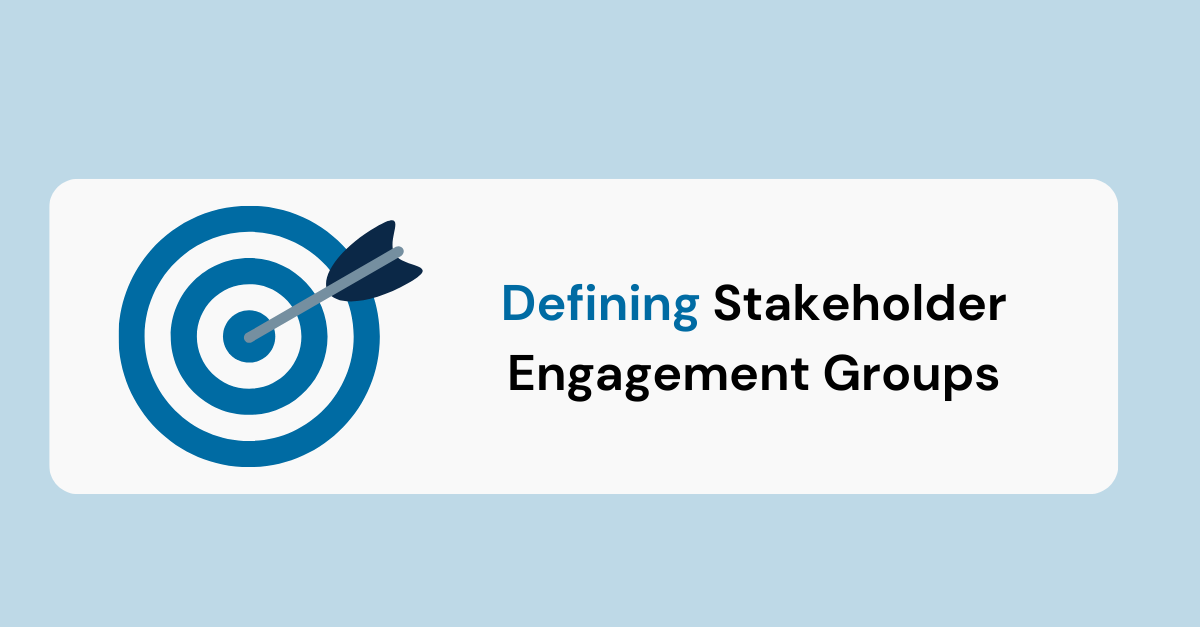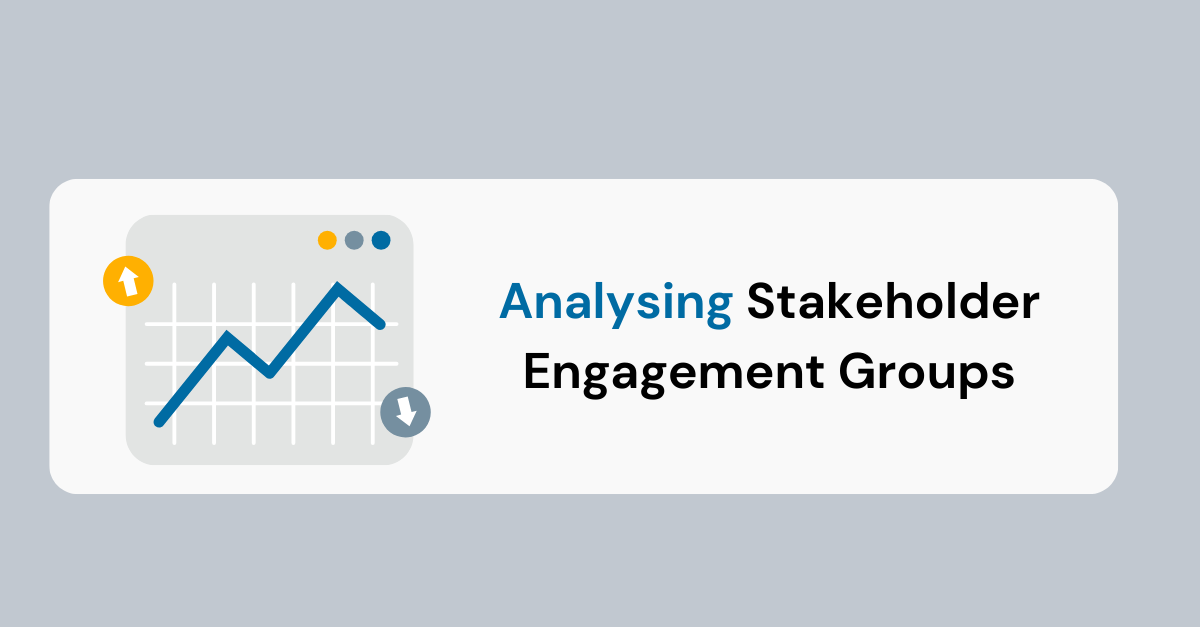When communicating with stakeholders, it’s crucial to ensure that you’re defining, managing, and analysing your stakeholder engagement groups. You see, regardless of whether you’re interacting with a business, government agency, non-profit, or the wider community, engaging with stakeholders can positively impact your organisation by enhancing trust, transparency, and achieving shared organisational goals.
Within this article, we will delve into these three crucial measures to help facilitate effective stakeholder engagement.
- Defining Stakeholder Engagement Groups
- Managing Stakeholder Engagement Groups
- Analysing Stakeholder Engagement Groups

Defining Stakeholder Engagement Groups
- Identify Your Stakeholders: Before you initiate your engagement efforts, it’s essential to identify who your stakeholders are. Remember to keep in mind that stakeholders may fall into either internal or external categories. So, in order to pinpoint your stakeholders to help you understand who you may need to communicate with, it’s advisable to conduct a stakeholder analysis.
To assist you with this process, you might use stakeholder relationship management software (SRM) as a more streamlined approach. This is because a SRM can offer tools and insights, such as capturing historical data in one centralised location while facilitating the management of stakeholder interactions. This ensures that no pivotal connection or communication opportunity is overlooked.
You might also utilise frameworks such as the IAP2’s Public Participation Spectrum to help assist you in defining your stakeholder engagement groups. Depending on your decision’s impact and public participation objectives, you can aim to inform, consult, involve, collaborate with, or empower your community. - Categorise your stakeholders: After you have identified your stakeholders, it’s now time to categorise them. For example, this could be based on their level of impact or influence on your project. Sorting your stakeholders in this way aids in prioritising your engagement efforts, determining the frequency and depth of communication needed with each group.
- Understand Your Stakeholders Needs and Expectations: Once you have categorised your stakeholder engagement groups, it’s time to understand their needs, concerns, and expectations. For instance, not every stakeholder group will require the same level of information. So, it’s essential to tailor your messaging based on their needs and requirements.
Managing Stakeholder Engagement Groups
Develop a Stakeholder Engagement Plan: Now that you have identified your stakeholders, it’s time to create a stakeholder engagement plan. This plan will outline how you will engage with each stakeholder group. For example, what communication method do they prefer? Some stakeholders may favour face-to-face interactions, while others may lean towards online communication, such as email. You see, it’s essential to understand these engagement methods for effective stakeholder engagement with your stakeholder groups.
Furthermore, it’s essential to outline what are the clear goals and objectives for each group. This is because not only does it enhance the overall communication process but it also contributes to the successful alignment of engagement efforts toward shared organisational objectives. Therefore, ensure to keep track of their important issues, respond to stakeholder requests, and distribute timely communications to keep stakeholders in the loop.
Assign Responsibility: To effectively manage your stakeholder groups, it’s important to designate individuals or teams from your organisation to an assigned stakeholder group/s. This will then ensure accountability and consistency in your engagement efforts.
Build Relationships: By consistently engaging and communicating with your stakeholders, it can help your organisation by nurturing your relationships with them. This involves open and transparent communication, active listening, and addressing their concerns and feedback promptly. Building trust is crucial in stakeholder engagement.
Adapt and Evolve: Stakeholder dynamics can change over time. So, be prepared to adapt your engagement strategies as these circumstances evolve. For instance, you might want to regularly review and update your engagement plan to stay aligned with your stakeholders’ needs.

Analysing Stakeholder Engagement Groups
Measure Engagement Effectiveness: To successfully access the effectiveness of your stakeholder engagement efforts, it’s important to figure out what you’re trying to measure. For example, is it to receive feedback? To identify and understand risks and concerns? Receive support? Help with decision-making? Once you have identified what you’re trying to measure, you can have a better understanding on what you’re looking for.
Analyse Feedback: Once you pinpoint what you’re measuring, you can then analyse the feedback and input provided by stakeholders to better understand their concerns and identify areas for improvement. Utilising this information can help your organisation with better decision-making processes. For example, by using Consultation Manager’s Issues Over Time Report can effectively showcase your team’s engagement efforts and pinpoint areas that require future focus.
Report and Communicate: After you have analysed the results from your feedback, you can then share the results of your stakeholder engagement efforts with your team and stakeholders. Sharing this feedback will help to improve transparency in reporting builds credibility and trust.
Continuous Improvement: Based on the insights you discovered from your reporting and analysis, you can then use that information to make continuous improvements you need to make to your communication strategies to ensure effective stakeholder engagement over time. As an example, leveraging Consultation Manager’s Event Statistics Report can highlight specific issues or topics that stakeholders have been discussing. This insight can provide a basis for determining long-term focus areas and key individuals to engage with.
By defining, managing, and analysing your stakeholder engagement groups, it can better support you in identifying your stakeholders, understanding their needs, and developing a detailed stakeholder engagement plan to build strong relationships, foster trust, and achieve your organisational objectives.
Utilising an SRM can better assist you with this process to enhance time management with stakeholder being centralised in one location. By regularly assessing and adapting your engagement strategies, it can ensure that your organisation remains responsive to the ever-changing needs and expectations of your stakeholders while maintaining effective stakeholder engagement.

